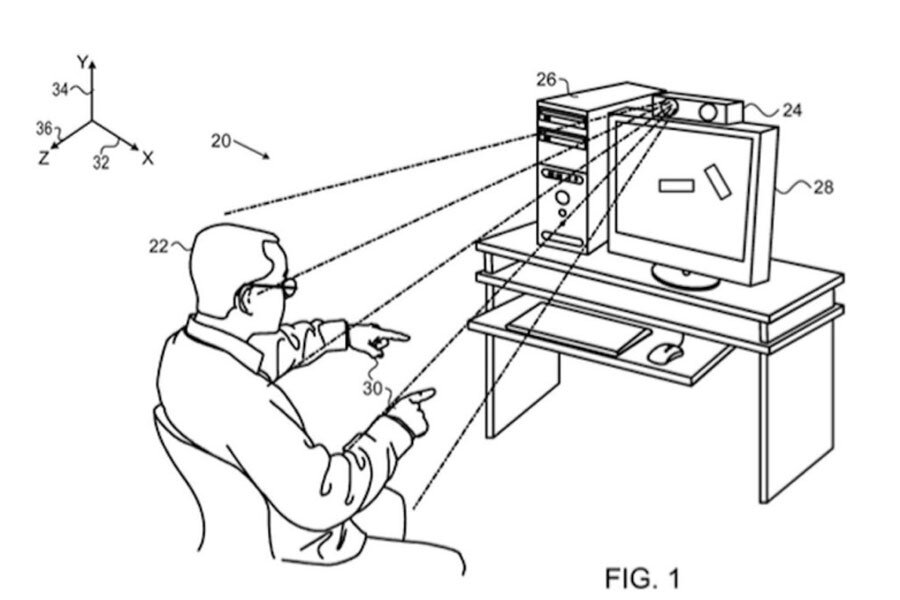Apple patent suggests an upcoming 3-D camera for iOS devices
On Tuesday, patents awarded to Apple signaled that the company might be trying its hand at 3-D and motion sensor technology.
As Patently Apple detailed, the first patent (no. 8933876) shows sketches relating to a 3-D recording device for still photos and video. The site speculates that the new cameras will have advanced depth-detection and color sensors to create “stereo disparity maps” (essentially 3-D images) and may even come equipped with facial recognition software that will distinguish facial expressions.
The patent’s diagrams dropped hints that the camera will work with iOS, and perhaps Macs, the upcoming Apple Watch, and the hypothetical Apple television.
The second patent (no. 8934045) was awarded to Apple on Tuesday after a lengthy court battle with Kodak. It describes a remotely controlled camera system that will allow users to upload videos and pictures to the Internet from a different device. For example, shoot a scene with an Apple 3-D camera and then upload it to YouTube from an nearby iPhone. This patent is already making waves as GoPro, the popular action-cam vendor, saw its stock drop 12 percent Tuesday.
Many have wondered how or if these patents will wiggle their way into Apple products. As the Daily Mail reports, rumors have been flying since 2013, when Apple bought the Israeli company Primesense for about $350 million. Primesense developed the original Kinect motion-sensing camera for Microsoft. After the acquisition, Apple stated that it “buys smaller technology companies from time to time” and declined to discuss what it planned to do with the company.
If Apple decides to incorporate this new technology into its existing products, users will get their first taste of Apple’s take on motion sensor technology. As the patent suggests, users may soon be able to signal for their computers to unlock with the wave of a hand. There will also be “focus gestures” so that user can interact with the 3-D interface. As the patent explains, "if user interface 20 is configured to show movies from a movie library stored on the computer, the focus gesture steps should be sufficiently different from the gestures used to control the movie library (e.g., gestures that select and control playback of a movie).”
As TechBuffalo reports, this suggests a value in placing the technology in something such as an Apple television.
So will you be able to control all of your Apple devices with your hand? Maybe.
While all of this is just speculation, it is hard to imagine the new software will not make it into some Apple products. One can only imagine motion sensor and facial recognition technology improving on the Apple home experience.
But while this may mean big things for Apple, the hypothetical technology draws comparisons to the world’s reactions to the Xbox One and its Kinect camera.
While Microsoft’s clumsy unveiling of the gaming system is partially to blame, the Xbox One's “always on” camera feature sparked outrage and controversy. Many were afraid Microsoft would track their every move with the motion sensor and facial recognition software. Microsoft has since given the option to buy an Xbox One without the Kinect camera.
Apple has made zero claims on what it plans to do with these patents, if anything at all, but one might wonder if the company will run into similar privacy problems if the speculation is true.







